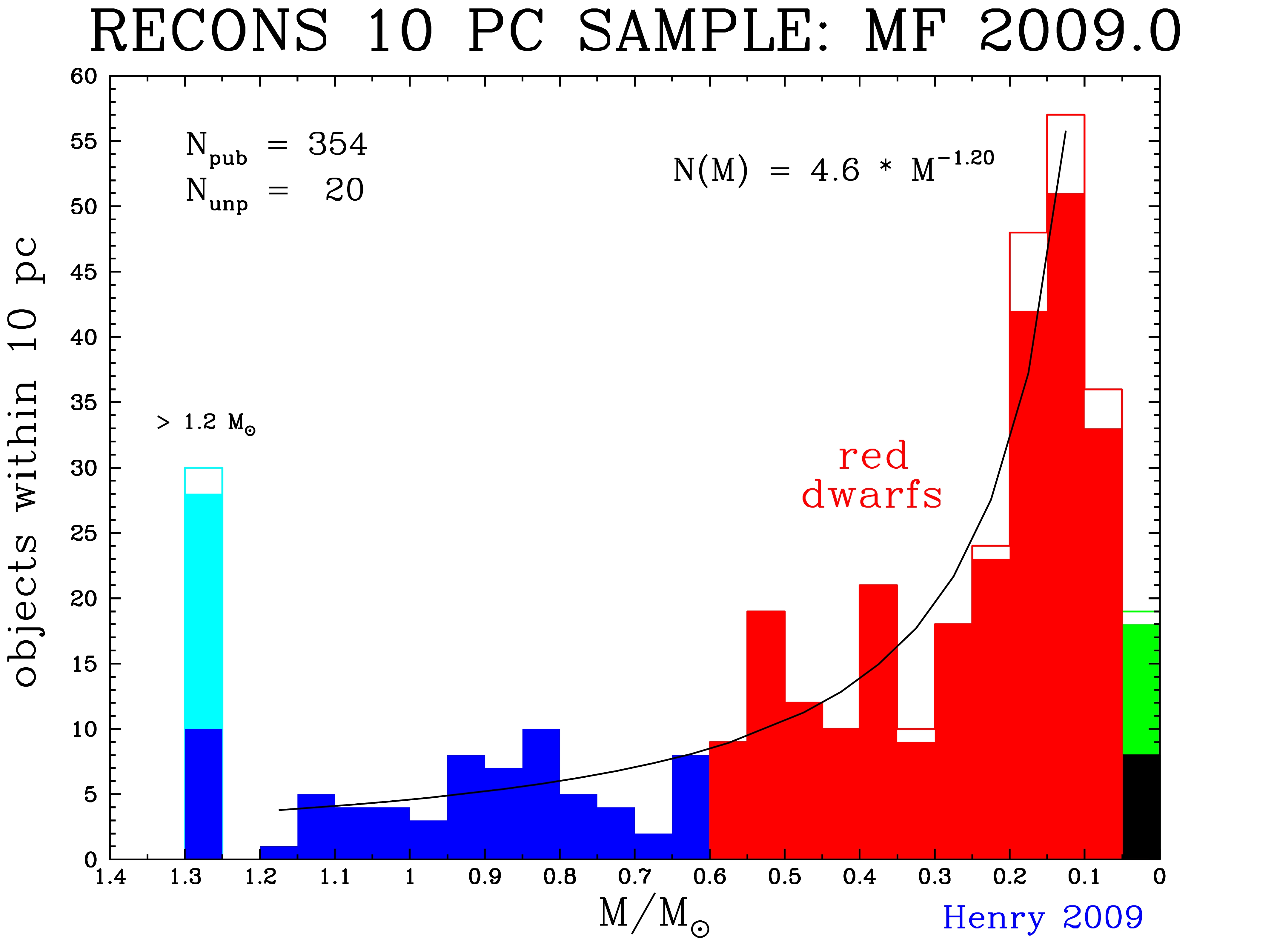
|
The members of the RECONS 10 parsec sample as of 2009.0 are shown in
histogram form, based on each object's mass in units of the Sun's
mass, M/Mo. Both primary stars and companions are included in the
counts. Solid bars represent objects with published trigonometric
parallaxes in the refereed literature larger than 100 milliarcseconds
and with errors less than 10 milliarcseconds. Open bars represent
objects suspected to meet these sample criteria but which are
unpublished as of January 1, 2009.
The light blue bar represents white dwarfs that are the leftover cores of stars that have undergone evolution and shed their outer layers. Their mass values are usually between 0.4 and 1.0 Mo, but the precursor stars that produced them typically had masses (much) larger than 1.2 Mo. The blue bars represent stars of spectral types A, F, G, and K. A few of the most massive stars currently found in the solar neighborhood have masses much larger than 1.2 Mo, so are included in the left-most bin. The red bars represent the ubiquitous red dwarfs of spectral type M that dominate the solar neighborhood. Four L dwarfs are also included in the right-most red bin. The black bar represents the T dwarfs. The green bar represents planetary companions, all of which are companions to stars in the sample, i.e. none are free-floating objects between the stars. These objects are almost certainly planets, although definitive masses remain elusive in most cases, so it is possible that they are more massive brown dwarfs or stars. The black line represents a power-law fit to the data and the equation describing the curve is commonly referred to as the "mass function," listed in the upper right corner of the graph. If there were equal numbers of objects at all masses, the exponent in the equation would be 0.00. As can be seen, there are more small stars than large stars, which requires a negative exponent for the mass function. New discoveries by RECONS and others have changed the exponent from -1.05 in 2000 to -1.20 in 2009, as more small stars are revealed in the solar neighborhood.
|